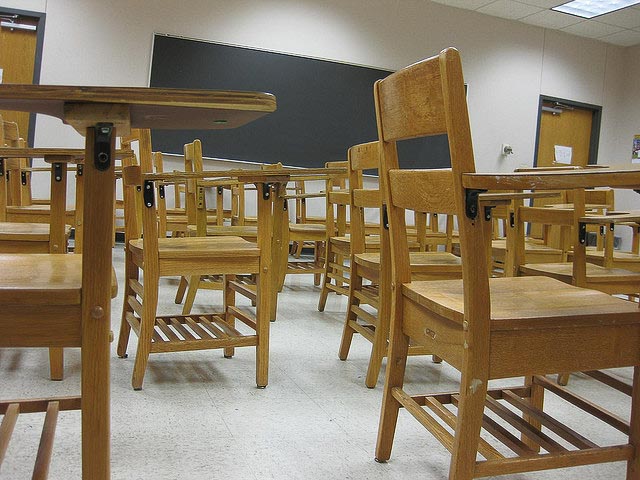School districts have long sought to figure out the best ways to stem the tide of students who leave the system prematurely.
Now, a new analysis by the Houston Education Research Consortium, part of the Kinder Institute for Urban Research, may help them figure out how to better target their resources in the fight against dropouts.
The study reveals that the strongest predictor of dropouts in the Houston Independent School District is whether a student is age 16 or older at the start of 9th grade.
The research also highlights other predictors of dropping out: whether a student received an F in 8th grade; whether a student had a disciplinary incident in 8th grade; and whether a student failed to meet the TAKS testing standard in 8th grade math.
Dr. Diego Torres, the lead author of the report, said the findings aren’t necessarily a surprise, since they highlight the fact that if a student struggles when he or she is on the cusp of adulthood, it will become much more difficult to recover.
“Once you’re already in 9th grade, you’re so close to adulthood,” Torres said. In other words, a student can turn things around – if he gets the chance to do so early.
Article continues below graphic.
The Texas Education Agency reports that the Houston Independent School District’s class of 2013 had a graduation rate of 81.6 percent, considerably less than the statewide rate of 88 percent.
The study was conducted by the Houston Education Research Consortium, a joint research partnership between Rice University and HISD that is housed within the Kinder Institute. It was based on an analysis of 9,009 HISD students who were in 9th grade during the 2009-2010 academic year. Ultimately, 776 of them dropped out by the end of 2012-2013 four years later.
Torres said the findings could give the district the information it needs to steer its resources towards the programs most likely to reduce dropouts. Though the findings were based on HISD data, Torres speculated other large, urban districts would show similar patterns and could benefit from the analysis.
“Districts can’t attack everything because they have limited resources,” Torres said. “The efficient use of these limited resources requires that we target the top three or four malleable factors associated with the failure to complete school.”
The study also identified factors that are least closely linked to dropouts, like whether a student is enrolled in special education courses, a student’s race, and whether or not he has limited English proficiency.
Despite the breadth of the research, the study has limitations. Researchers weren’t able to consider factors that might have an even greater effect on whether a student drops out, such as his or her motivation, family involvement, or the quality of school itself. Torres also acknowledged that the study only examines whether certain factors were associated with dropping out – not whether they directly caused dropouts.
The researchers suggested that the district’s efforts to keep students at grade level by requiring summer school for failed courses is praiseworthy.
Policymakers, though, need to think hard about implementing strategies at both elementary and secondary schools that will keep students at grade level so that they can avoid needing summer school remediation altogether, Torres said.
Moreover, Torres highlighted the fact that, in general, teachers don’t get much training in how to handle unruly or disruptive students, particularly prior to entering disciplinary action; more efforts to help teachers and other school officials learn to properly address those situations might lead to fewer expulsions and suspensions – events highly associated with future dropouts.
“Because … students often misbehave as a consequence of factors far outside of school control and related to their lives at home and in their neighborhoods, treatment of students by credentialed professionals such as school or clinical psychologists may be needed on an ongoing basis to prevent repeated incidences,” the researchers wrote in their report.

